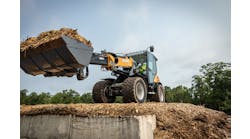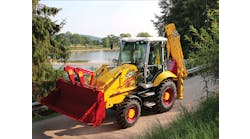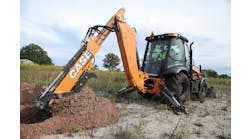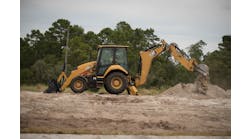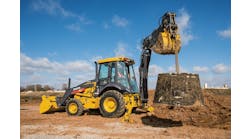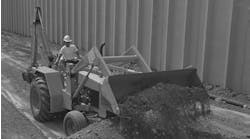With the coldest months of the year just around the corner, it's time to examine how your backhoe rental fleet will fare and to ask yourself: am I winter-ready?
If your answer is maybe, perhaps memories of winter's worst will inspire you to get going with some basic seasonal preventive maintenance. Here are some tips to help you get started:
* Change the oil and oil filter before cold weather arrives. Use the proper viscosity oil recommended for winter operation.
* Inspect dry element-type filters - clean or replace if clogged with dust or dirt. Inspect for damaged seams and pleats, and replace if necessary.
* If the backhoe will be operated in blowing snow, consider a pre-cleaner on the air-intake system. This attachment prevents blown snow from entering the air-cleaner element, which could result in loss of power, excessive fuel consumption and possible oil consumption.
* Maintaining the proper mixture of antifreeze and water is mandatory for proper cooling system operation in subfreezing temperatures.
* Before cold weather develops, drain the cooling system. Replace cracked, soft or swollen radiator hoses. Check thermostats for proper operation.
* Clean dirt and trash from the radiator fins and inspect the surrounding baffles and fan shroud to see that they are in place and functional.
* Fill cooling system with proper mixture of clean water and permanent antifreeze with an ethylene-glycol base. The solution should be adequate to protect to the lowest temperature expected.
* Inspect belts and replace those showing damage or excessive wear. Check for proper belt tension to ensure proper coolant and air flow.
* Check the condition of batteries and cables. Clean and inspect battery posts and cables ends; clean and tighten terminals on the starter motor.
* Test the engine coolant heater to ensure that it works properly. If unequipped, consider installing one.
* Tighten connections on the cold-weather starting aid, inspect the line for kinks and clean the starting-fluid spray orifice.
Non-engine components Although engines can account for a number of cold- weather woes, other components also should receive your close attention.
* Transmission and hydraulic system components, hoses, lines, and connections should be examined for external leaks or damage.
* Drain and refill oil and filters, using winter-grade oils if required for specific applications.
* Check oil for excessive contamination and metal particles.
* Inspect and clean breathers.
* Check tires and rims for damage. Tires with nicked or bent rims may retain air during warm weather, but often leak in subzero temperatures.
* Replace broken windows and seals around doors. Replace windshield and rear -window wipers.
* Check operation of the heater and defroster.
* Make sure all lights, turn signals and warning lights operate properly - especially if the machine is to be used for snow removal.
Specing new machines If you are adding new backhoes to your fleet, give serious consideration to the many cold-weather options that are available. Spending a little extra money now may make a big difference in utilization. In addition to making your backhoe more winter-weather capable, numerous accessories and attachments can widen its year-round appeal as well.
Many manufacturers offer a cold-weather package that includes engine coolant heater, ether-start aid and dual heavy-duty batteries. These accessories help backhoe engines start easier and with less strain. And they can mean the difference between a machine that doesn't work and one that works.
For icy or muddy conditions, all-wheel drive is a popular and practical option. Not only does it add traction and control on slippery surfaces, but it also enhances productivity in normal working conditions.
When it comes to cold-weather operator comfort, there are several ways to make winter work more tolerable:
* Obviously, a heated cab is the best option. However, short of that, an underseat heater is a welcome addition that will help keep a chill off the operator's feet.
* Cell-phone power ports and weather-band radios are also appreciated extras, especially when the machine is being used for plowing snow.
* Cold-weather attachments such as snow basket loader buckets and narrower backhoe buckets are ideal for a variety of winter uses.
* Changing the teeth on the buckets can also make a difference. Offer frost teeth, as well as couplers, for your bucket attachments.
* An extendible dipperstick can also prove profitable, increasing digging depth, reach and the machine's all-around performance capabilities.
Take time today to ensure that your backhoes are ready, able and willing to face winter's worst, and you will be rewarded with a highly rentable fleet that will be "in season" year-round.
* Front-wheel drive
* Engine coolant
* Ether-start aid
* Dual heavy-duty batteries
* Bucket/teeth attachments
* Couplers for buckets
* Pressurized cab with heater, cover
* Cell phone and weather radio hookups
* Differential locks
